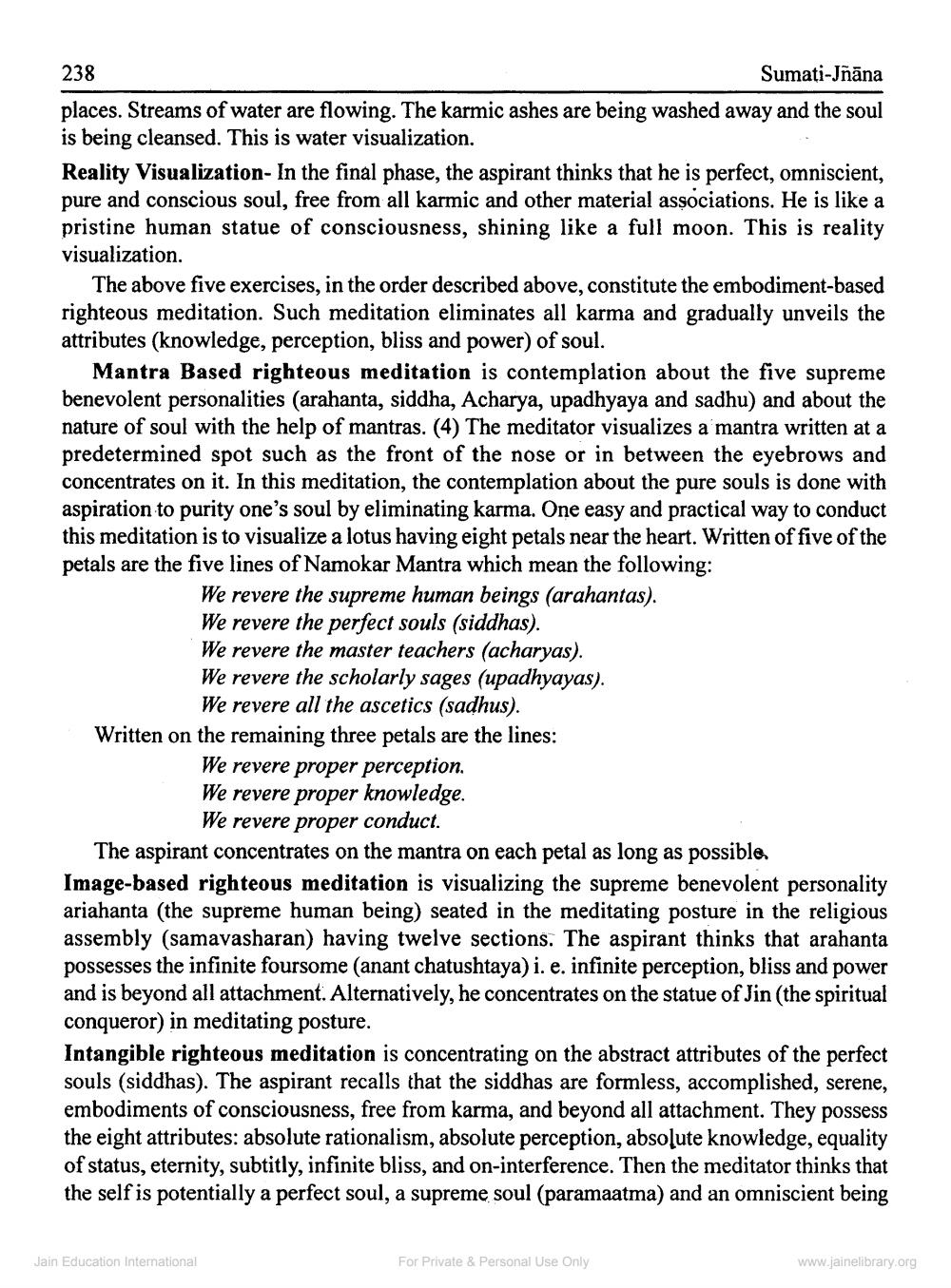________________
238
Sumati-Jñāna places. Streams of water are flowing. The karmic ashes are being washed away and the soul is being cleansed. This is water visualization. Reality Visualization - In the final phase, the aspirant thinks that he is perfect, omniscient, pure and conscious soul, free from all karmic and other material associations. He is like a pristine human statue of consciousness, shining like a full moon. This is reality visualization.
The above five exercises, in the order described above, constitute the embodiment-based righteous meditation. Such meditation eliminates all karma and gradually unveils the attributes (knowledge, perception, bliss and power) of soul.
Mantra Based righteous meditation is contemplation about the five supreme benevolent personalities (arahanta, siddha, Acharya, upadhyaya and sadhu) and about the nature of soul with the help of mantras. (4) The meditator visualizes a mantra written at a predetermined spot such as the front of the nose or in between the eyebrows and concentrates on it. In this meditation, the contemplation about the pure souls is done with aspiration to purity one's soul by eliminating karma. One easy and practical way to conduct this meditation is to visualize a lotus having eight petals near the heart. Written of five of the petals are the five lines of Namokar Mantra which mean the following:
We revere the supreme human beings (arahantas). We revere the perfect souls (siddhas). We revere the master teachers (acharyas). We revere the scholarly sages (upadhyayas).
We revere all the ascetics (sadhus). Written on the remaining three petals are the lines:
We revere proper perception. We revere proper knowledge.
We revere proper conduct. The aspirant concentrates on the mantra on each petal as long as possible. Image-based righteous meditation is visualizing the supreme benevolent personality ariahanta (the supreme human being) seated in the meditating posture in the religious assembly (samavasharan) having twelve sections. The aspirant thinks that arahanta possesses the infinite foursome (anant chatushtaya) i. e. infinite perception, bliss and power and is beyond all attachment. Alternatively, he concentrates on the statue of Jin (the spiritual conqueror) in meditating posture. Intangible righteous meditation is concentrating on the abstract attributes of the perfect souls (siddhas). The aspirant recalls that the siddhas are formless, accomplished, serene, embodiments of consciousness, free from karma, and beyond all attachment. They possess the eight attributes: absolute rationalism, absolute perception, absolute knowledge, equality of status, eternity, subtitly, infinite bliss, and on-interference. Then the meditator thinks that the self is potentially a perfect soul, a supreme soul (paramaatma) and an omniscient being
Jain Education International
For Private & Personal Use Only
www.jainelibrary.org




